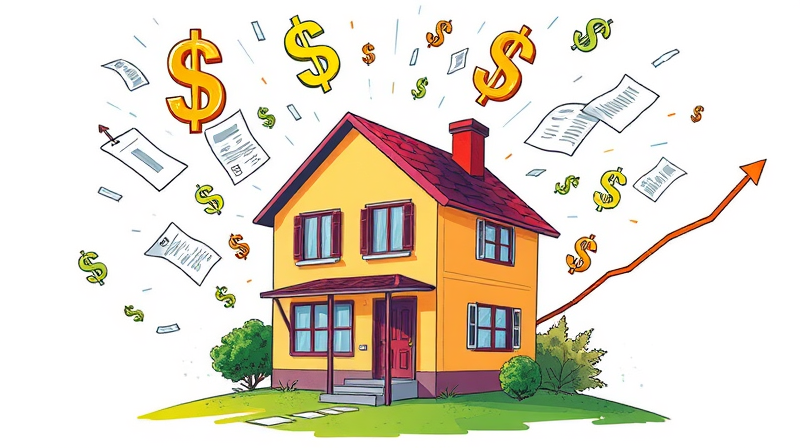
When you invest in real estate, depreciation deductions can be one of the most powerful tools to reduce your taxable income over time. While these deductions provide ongoing benefits during ownership, the tax advantages do not simply vanish when you sell the property. Instead, the IRS requires a process called depreciation recapture to reclaim some of those deductions. Without proper planning, this provision can dramatically reduce your after-tax proceeds when an investment property changes hands.
By grasping depreciation recapture rules, you can plan sales to maximize profits, minimize surprises, and make informed decisions for both residential and commercial investments.
Depreciation recapture is a tax provision triggered when an investor sells an asset for more than its adjusted basis after taking depreciation deductions during ownership. The IRS taxes the portion of the gain as ordinary income that corresponds to those prior write-offs, rather than at preferential capital gains rates. This mechanism prevents indefinite sheltering of appreciation from taxation solely by deducting depreciation.
In effect, depreciation recapture ensures that some of the benefits you received from annual depreciation are ultimately taxed when the asset has appreciated. It aligns tax outcomes more closely with the real economic gain on sale.
Under U.S. tax law, real estate investors use the modified accelerated cost recovery system (MACRS) to deduct the cost of an investment property (excluding land) over a predetermined span. Residential rental properties are depreciated over 27.5 years, while commercial properties use a 39-year schedule. Improvements such as roof replacements, HVAC upgrades, and major renovations increase your cost basis and extend the depreciation timeline.
Accurately allocating costs between land and improvements is vital, since land is not depreciable. Maintaining detailed records of capital improvements ensures you claim the full allowable basis and calculate recapture precisely.
Depreciable assets fall under two main IRS categories. Section 1245 covers personal property like equipment and machinery, while Section 1250 applies to real estate such as buildings and structural components. The recapture rates and taxable limits differ substantially between these classifications.
For typical real estate holdings, only straight-line depreciation applies, so you generally face a maximum recapture rate of twenty-five percent on the accumulated depreciation when you sell. Any gain beyond that recaptured amount qualifies as a long-term capital gain.
Understanding the calculation process helps you anticipate tax liabilities and plan accordingly. Breaking the calculation into discrete actions ensures accuracy and transparency, whether you handle it yourself or work with a tax professional.
Once you identify the recapture portion, any remaining gain above that amount is taxed at long-term capital gains rates (0%, 15%, or 20% depending on your bracket). If the sale results in a loss, no recapture applies.
Suppose you purchased a rental property for $107,000, attributing $7,000 to land and $100,000 to the building. Over five years, you claim $3,636 annually, accumulating $18,180 in depreciation. Selling the property for $120,000 yields an adjusted basis of $88,820 ($107,000 – $18,180) and a total gain of $31,180 ($120,000 – $88,820).
Of that $31,180 gain, the $18,180 depreciation deduction is recaptured at up to 25%. The remaining $13,000 qualifies as long-term capital gain. This example highlights how recapture can erode what appears to be a substantial profit if not anticipated in your cash-flow projections.
All details of your depreciation recapture and total gain are reported on IRS Form 4797, Sale of Business Property. The recapture portion flows from Form 4797 to your Form 1040, affecting your ordinary income tax. If you conducted a cost segregation study, any accelerated depreciation on short-lived assets may trigger recapture at higher ordinary income tax rates.
Maintaining up-to-date depreciation schedules, receipts for improvements, and closing statements ensures your filings withstand IRS scrutiny and minimize audit risk.
Combining multiple strategies and consulting a CPA helps tailor approaches that align with your liquidity needs and long-term goals. Advanced planning can preserve more of your investment returns and reduce unwelcome surprises at tax time.
Depreciation recapture can significantly impact after-tax proceeds when selling an investment property. Always run a full recapture versus capital gains calculation before listing any real estate. A clear grasp of Section 1245 and Section 1250 rules ensures you understand which portion of your gain faces ordinary income tax versus capital gains treatment.
Proactive planning—through cost segregation, like-kind exchanges, or opportunity zone investments—allows you to optimize your tax position and protect your wealth. By mastering depreciation recapture, you safeguard your investment performance over the long run and ensure that depreciation deductions truly work in your favor both during ownership and at sale.
References













